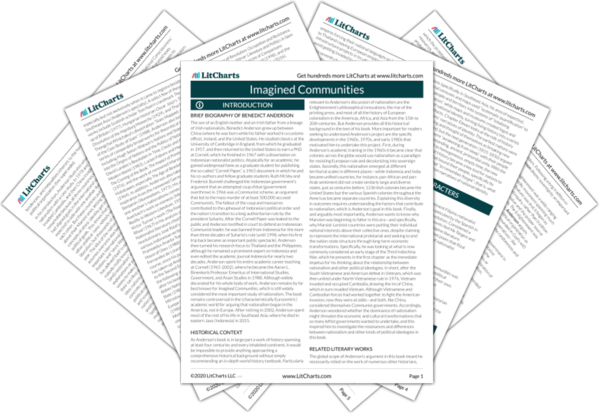In all, Anderson’s argument about piracy has two primary forms: first, some countries copied others’ forms of nationalism, and second, governments copied popular nationalisms to hold onto power and challenge the political potential of revolutionary movements. Anderson’s emphasis on the inherent contradiction between nationalism, on the one hand, and monarchy, empire, and dynasty, on the other, indicates that the former has always been bound to overtake the latter (as his next chapter will address). But Europeans’ nostalgia for empire also shows that, for those in power, accepting or erasing this contradiction is straightforward—one can easily learn to believe that one’s own group deserves popular sovereignty as a nation, while other groups are inferior and should be ruled by external powers.


